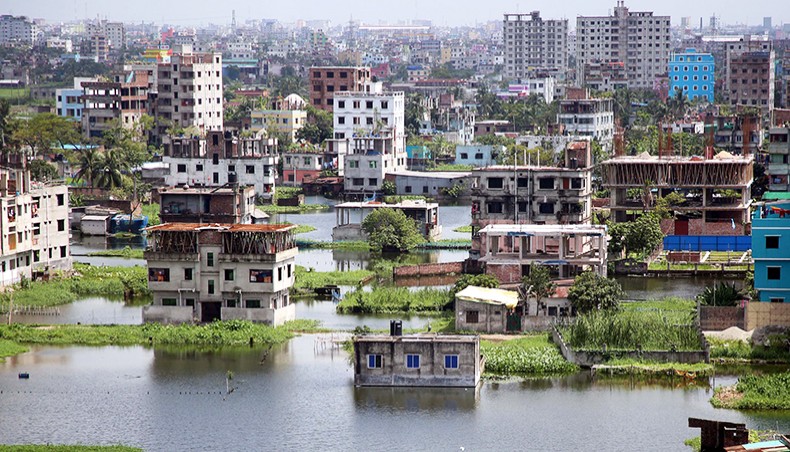Thousands of flood victims at shelters across half of Bangladesh are unwilling to leave for home though rivers have receded as forecasters warned that there might be another spell of flood at the end of this month.
The latest Met Office forecast about a new spell of flood came as a shock to people for the ongoing flood passed its 42nd day on Friday, when it was still far from over with a dozen rivers still spilling their banks at 16 places of the affected 33 districts.
At seven of the places, the rivers overflowed their danger marks by half a meter or more while at four other places the water level stayed close to half a meter above their danger marks until Friday.
‘We are still surrounded by water and have heard that there is a possibility of another round of flooding soon. I don’t think it’s time to go back home,’ said Sharifa Begum, who has been living on an embankment by the Dharla River in Kurigram for about a month now.
Bangladesh Meteorological Department in its monthly outlook for August predicted that the ongoing flood might come to an end by the middle of the month but another spell of flood might follow at the end of the month because of heavy monsoon rains.
The new flood might affect the country’s northern, north-eastern and south-eastern regions, said the BMD outlook issued on August 3.
‘It looks like that the break before the next flood would be very short,’ meteorologist Abdul Mannan told .
Met Officials said that their monthly outlook was prepared in consultation with the Flood Forecasting and Warning Centre.
The FFWC gave its last medium-range forecast valid for 10 days on July 27, 11 days ago.
Bangladesh, draining much of the 1.7-million square kilometre Ganges-Brahmaputra-Meghna basin, is no stranger to multiple spells of monsoon flooding.
This year monsoon arrived in the basin earlier than usual causing heavy rains.
Historically July is the wettest monsoon month in the basin but floods often occur in late August through September.
On Friday, India Meteorological Department said that most areas in the upstream such as Arunachal Pradesh, West Bengal and Sikkim and Assam and Meghalaya were likely to experience widespread rains until Tuesday.
There is the likelihood of fairly widespread rains in many areas in Gangetic West Bengal and Bihar as well over the same period of time, said the IMD.
Bangladesh Water Development Board’s northern region chief Jyoti Prashad Ghosh said that 42,260 people were still living on embankments in the region.
‘Flood waters are receding very slowly and people are unwilling to go back home unless they are sure that there is no possibility of further flooding very soon,’ he said.
According to the National Disaster Response Coordination Centre, more than 69,494 people are living at 1,452 flood shelters in the flood affected districts.
The receding rivers continued to cause erosion across flood-hit areas with 196 houses devoured by the rivers between Thursday and Friday in Rangpur division alone.
The ongoing flood has already become the worst of all floods that occurred in flood-prone Bangladesh over the last two decades with 54,273 houses lost to erosion in nine flood-ravaged districts of Rangpur division alone.
Northern Bangladesh farmers have lost 5,165 hectares of land to erosion so far, according to the Department of Agricultural Extension, Rangpur Division.
The New Age correspondent in Munshiganj reported that hundreds of families were still at dozens of shelters in the district.
Dhaka district relief and rehabilitation officer Mohammad Hossain said that the flood situation in the district did not improve much with rivers around it swelling.
A Flood Forecasting and Warning Centre bulletin said that five of the six rivers around Dhaka receded more or less between Thursday and Friday.
The Turag kept swelling, said the bulletin.
The FFWC predicted that the rivers around Dhaka might continue receding until Sunday.
It said that the flood-affected people in the Dhaka city corporations might see water recede on Saturday.
Over 5.5 million people have already been affected by the flood while 161 got killed because of flood-related causes.
The protracted flood has exposed people to severe food and drinking water shortage.
Lack of healthcare access and sanitation exacerbated the problem with a large number of people becoming ill with many water-borne diseases.













